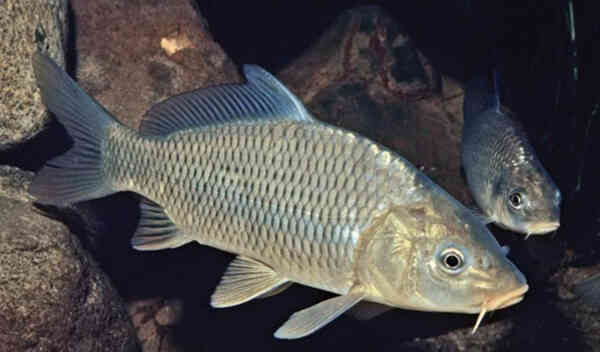The scales have the character "十" in Wenli, hence the name carp (Li Shizhen's "Compendium of Materia Medica"). Also known as red carp, xuanju, huangji, and huangzhui; today it is commonly known as carpguaizi. Chixian Gong (Tang Dynasty Law. See "Kangxi Dictionary").
Carp is the earliest cultured fish in the world. As early as the Yin and Shang Dynasties, China began to breed carp in ponds. The growth of carp in China varies with the cold and warm climate; it is faster in the south and slower in the northeast; there is a similar phenomenon in the Yellow River Basin; it is faster in Shandong and Henan, and slower from Inner Mongolia to Gansu. During the Spring and Autumn Period and the Warring States Period, Fan Li compiled the world's earliest fish farming book, "The Book of Fish Farming", which detailed the cultivation of carp in ponds. By the Han Dynasty, raising carp in ponds had become very popular, and everyone from the royal family to the landlords were engaged in carp raising. In the Tang Dynasty, because the emperor's surname was Li, and "carp" has the same pronunciation as "李", the value of carp doubled and it became a symbol of the royal family. Therefore, "raising carp", "catching carp", "selling carp" and "eating carp" It has become the biggest taboo of the royal family, and violators must be severely punished. Therefore, the carp breeding industry in the Tang Dynasty gradually declined. Later, carp gradually spread from our country to other countries. Carp has become a worldwide farmed fish. After the founding of the People's Republic of China, with the rapid development of bioengineering technology, scientists used artificial cross-breeding technology to develop many new carp species with fast growth and good quality, such as Feng carp, Heyuan carp, Furong carp, and Jian carp.

Carp is a freshwater bottom fish and is omnivorous. It has strong adaptability to the living environment. It lives at the bottom of the water body. It has a gentle temperament and strong vitality. It is resistant to cold and hypoxia, and is relatively tolerant to salt and alkali. It grows well in salt water less than 7 g/L, and the optimal salt content is 1 ~4g/L. The most suitable water temperature is between 20 and 32°C, and the most suitable water temperature for reproduction is 22 and 28°C. The optimum pH value for growth is 7.5 to 8.5. Carp is an omnivorous fish, and its young mainly feed on rotifers, crustaceans and small invertebrates. As the individual grows larger, it gradually eats small benthic invertebrates; adult fish mainly eat snails, clams, clam molluscs and aquatic insect larvae, small fish, shrimp, etc., and also eat some filamentous algae, aquatic plants, and plant debris. crumbs and artificial compound feed, etc. As the water temperature rises, the amount of food consumed increases, and during the reproductive season, food intake stops. After breeding, there is a peak feeding season. In winter, the feeding intensity is weak or even no feeding.
Carp has been regarded as a food treasure since ancient times. The world's earliest fish farming literature - "Fish Farming Classic" written by Tao Zhugong Fan Li (473 BC), was written in Dingtao, Shandong Province, in the Yellow River Basin, and mainly focused on carps. Even Tao Hongjing (456-536) of the Northern and Southern Dynasties recorded: "The carp is the eldest of all fishes. It is cute in appearance and can change magically. It can even fly across the rivers and lakes, so the immortal Qin Gao rides it." According to the myth of the carp jumping over the dragon gate and turning into a dragon. , is still known to children and old people all over the country. Traditional Chinese culture believes that dragons are the most noble, and carp can transform into dragons as long as they cross the dragon gate. Carp represents tenacious vitality, strong fertility, and also represents the wealth and prosperity of the family. In addition, carp is homophonic with "property and benefit", so China has formed many carp-related cultural customs over the past 2,000 years since the Eastern Zhou Dynasty. For example, children ride carp in New Year paintings, and fish must be included in the New Year's Eve dinner - most of them The fish served at regional New Year's Eve dinners are all carps. Many areas have long retained the custom of giving carps as gifts during the New Year. In some places, there is a custom of eating carp during specific seasons.